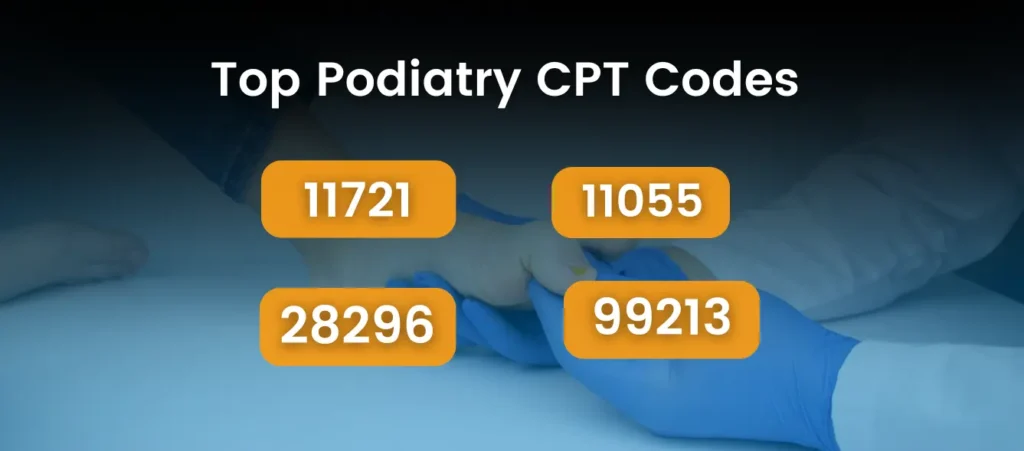When it comes to podiatry, every step counts—both for patients and the folks handling the billing. At Medical Billing Wholesalers, we understand that podiatry medical billing is a unique beast, blending routine foot care with complex surgical claims. Whether it’s a bunionectomy or a diabetic foot exam, getting the codes right is essential to keep the revenue flowing and the denials at bay. Let’s lace up and explore the ins and outs of podiatry billing, why it’s trickier than it appears, and how to keep your practice on solid footing.
Why Podiatry Billing Isn’t a Walk in the Park
Podiatry sits at the intersection of primary care and specialty services—a coding conundrum in its own right. From routine nail trims to intricate ankle reconstructions, podiatrists perform a wide range of procedures. Complicating matters further are the strict insurance rules, such as Medicare’s guidelines that stipulate coverage for “medically necessary” foot care only when linked to a systemic condition. For more detailed guidelines, review Medicare’s Local Coverage Determinations (LCDs).
According to the American Podiatric Medical Association (APMA), podiatrists performed over 18 million patient visits in 2023, with diabetic foot care alone generating claims worth $6 billion. That’s a lot of toes to tally!
Key Challenges in Podiatry Billing

Routine Foot Care Restrictions
Payers like Medicare only cover routine foot care (such as nail debridement or callus removal) when it’s linked to a systemic condition like diabetes or peripheral artery disease. Missing the correct diagnosis code can lead to claim rejections. As one expert puts it, “Billing routine foot care without a systemic link is like trying to sell flip-flops in a blizzard.”
Modifier Madness
Podiatry billing often involves a complex array of modifiers—for instance, -Q8 (class B findings) or -59 (distinct procedural service). A 2024 report by RevCycle Intelligence noted that 20% of podiatry claim denials stemmed from modifier errors. Getting these wrong can leave your claim limping back unpaid.
Surgical Specificity
Podiatric surgeries, from procedures like CPT 28110 (bunionectomy) to CPT 28296 (Hallux Valgus correction), demand precision in coding. The American Academy of Professional Coders (AAPC) reports that podiatry surgery claims are rejected 15% more often than those for general surgery, largely due to documentation gaps.
Telehealth Traction
The rise of telehealth—especially for diabetic foot checks, which increased by 45% since 2022 according to McKinsey—has introduced new challenges. For instance, using the correct Place of Service (POS) code is critical. Misclassifying a telehealth visit as an in-office appointment (e.g., using POS 11 instead of POS 02) can steer your claim into denial territory.
Top Podiatry CPT Codes to Know
Here’s a quick rundown of the heavy hitters in podiatry billing, along with some usage stats:

- CPT 11721: Nail debridement (6+ nails) is used in 40% of podiatry Medicare claims (CMS, 2023).
- CPT 11055: Paring/cutting of corns/calluses accounts for 25% of routine care visits (APMA, 2023).
- CPT 28296: Bunionectomy with osteotomy typically nets between $500 and $800 per procedure (Health Affairs).
- CPT 99213: Established patient office visits represent 60% of podiatry E/M claims (MGMA, 2024).
Industry Data to Keep You Grounded
- Denial Rates: Podiatry claims face a 12% denial rate—3% higher than the national average (RevCycle Intelligence, 2024).
- Revenue at Risk: The APMA estimates that practices lose roughly $50,000 annually due to billing errors.
- Diabetic Foot Boom: Treatments for diabetic foot ulcers increased by 30% from 2020 to 2024, driving $2 billion in claims (CMS).
Tips for Podiatry Billing Success
Nail Documentation
Ensure that every routine procedure is linked to a qualifying ICD-10 code (for example, E11.9 for diabetes). A 2023 study by HBMA found that proper documentation can reduce denials by up to 35%. As billing expert Tom Corncutter reminds us, “No diagnosis, no dollars—it’s that simple.”
Modifier Mastery
Invest in training your team on podiatry-specific modifiers. Incorporating billing software with built-in alerts can reduce errors by as much as 50%, according to RevCycle Intelligence.
Audit Like a Pro
Pre-submission audits have proven to catch 80% of coding errors, making them a crucial step in ensuring claim accuracy. Consider integrating regular audits into your billing workflow as a secret weapon against rejections.
Stay Updated
Medicare’s LCDs for podiatry evolve rapidly—keeping up is essential. Staying informed about the latest policy updates and payer requirements will prevent costly mistakes and delays.
Real-World Wackiness
Imagine this: Dr. Footfix performs a simple nail trim and bills CPT 11721 without noting a qualifying systemic condition. Medicare denies the claim faster than a sprinter in new sneakers. The resubmission not only costs an extra $30 but also delays reimbursement by a week. As biller Sally Solepatch puts it, “It’s like stepping on a Lego in the dark—painful and avoidable.” With proper coding and meticulous documentation, such scenarios become a thing of the past.
Conclusion
Podiatry medical billing is far more than a routine task—it’s a marathon of precision and expertise. With the right approach, including rigorous documentation, mastery of modifiers, and regular audits, you can turn tricky claims into smooth reimbursements. At Medical Billing Wholesalers, we’re dedicated to keeping your practice financially healthy and your billing processes streamlined.
Ready to step up your billing? Contact us today and let’s put your revenue on the right path—no missteps allowed!
By leveraging the expertise of industry bodies like the APMA, AAPC, and current insights from CMS and MGMA, your practice can navigate the complex landscape of podiatry billing with confidence.


